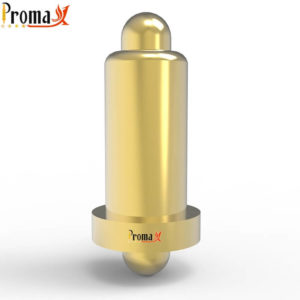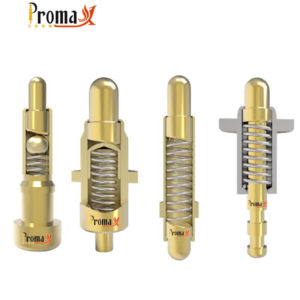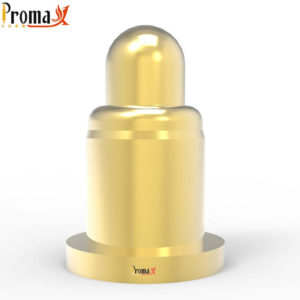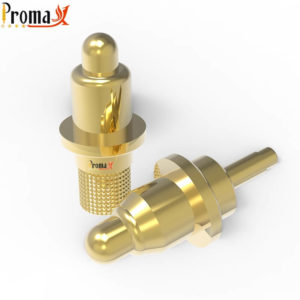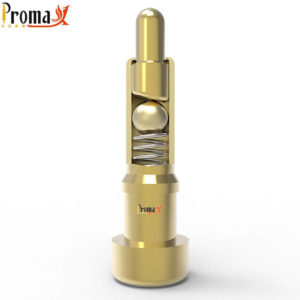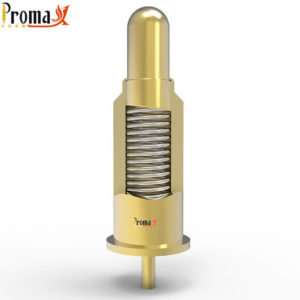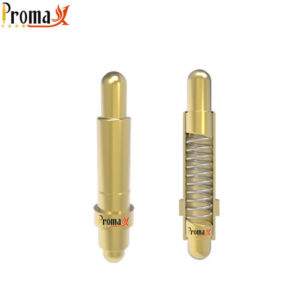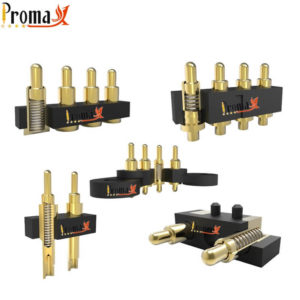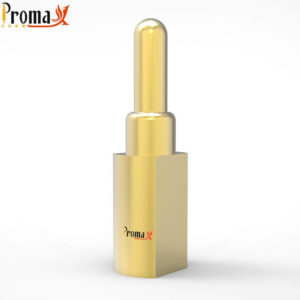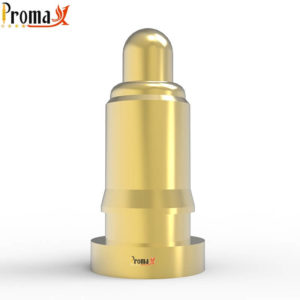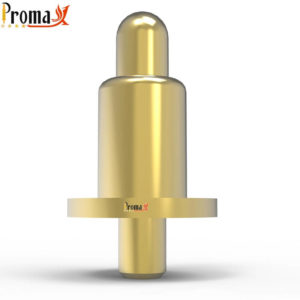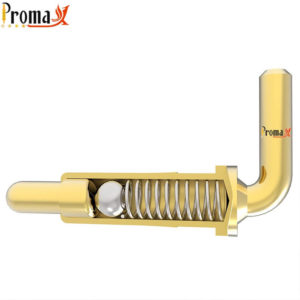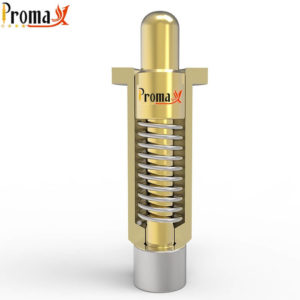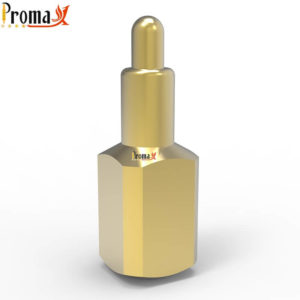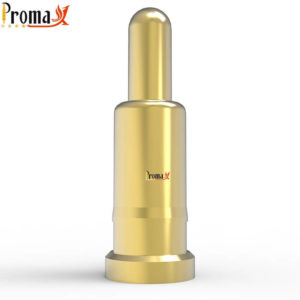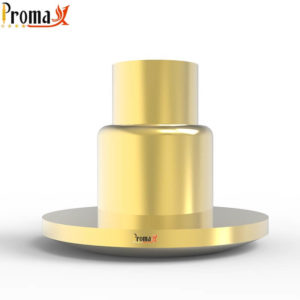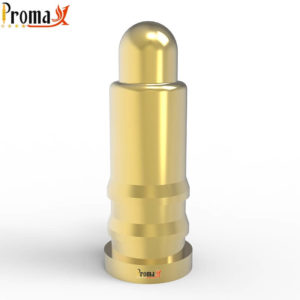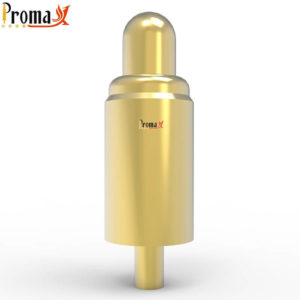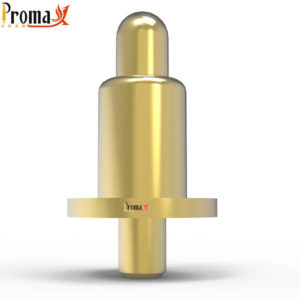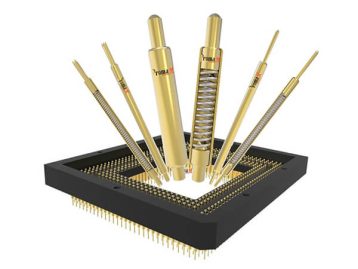Looking for a manufacturer or supplier of premium pogo pins? Look no further than Promax Pogo Pin! We pride ourselves on providing the best products and services in the business.
A pogo pin is called a spring-loaded pin too, and our pogo pins are no exception. Made from the highest quality materials, our pins are designed to provide a reliable connection for a wide range of applications.
And because we stand behind our products, we offer a 100% satisfaction guarantee on all of our pogo pins. So, if you’re not completely satisfied, we’ll make it right.
Contact us today to learn more about our pogo pins and how we can help you with your next project. We also offer a variety of customization options to make sure that you get exactly what you need.
In this article, we will discuss everything you need to know about spring-loaded pins.
What are they? How do they work? What are the benefits of using pogo pins? How to choose the right one? If you’re ready to learn more, keep reading! We’ll answer these questions and more! So read on to learn everything about pogo pins!
What Are Pogo Pins and What Do They Do?
A pogo pin is a spring-loaded pin of metal that makes stable electrical contact with a mating surface.
It is commonly used in electronic devices such as cell phones, digital cameras, laptop computers, smart wearable devices, electronic cigarettes, and so on.
Pogo pins are also known as spring-loaded pins or connectors, push-pull connectors, or just pogo pins.
Spring-loaded pins can be Male or female. Male pogo pins have no spring mushroom-shaped head with a flat top. The diameter of the head is slightly larger than the diameter of the shaft.
Female pogo pins have a spring in the countersunk hole in the barrel. The diameter of the hole is slightly larger than the diameter of the plunger.
What Is the Structure of Pogo Pins?
Pogo pins are one of the most commonly used types of electrical connectors. They are characterized by their small size and cylindrical shape.
Pogo pins typically have a diameter of 1 to 10 millimeters and a length of 2 to 25 millimeters.
The ends of the pins are usually flat, but they can also be tapered or beveled. Pogo pins are often used in cases where it is space limited and dustproof & waterproof requirements.
They are also used when it is necessary to connect two circuit boards together without using a physical connector.
Materials:
Pogo pins are made of a variety of materials, including brass, SUS304, 316F, 316L, CuTe, HBi59, and CuSn, the material selection is based on the intended application and the required level of durability.
For example, pogo pins used in high-vibration environments such as automotive applications are usually made of CuTe.
Plating & Coating:
Plating: Pogo pins may be plated with a variety of materials, such as Au, Ag, Pd, Pt, Rh, Ru, Ni, etc. Plating is typically done for two reasons: to improve electrical conductivity or to provide corrosion resistance.
Coating: The spring may also be coated with a variety of materials, such as silicone or Teflon. Coatings are typically used to improve the durability of the pogo pin or to provide resistance to a particular environment.
The Various Types of Pogo Pins and Their Applications.
SMT/SMD Pogo Pin: The tail of the barrel has a flat design, making it easy to weld PCB boards.
Though hole Pogo Pin: Barrel tail with a positioning pin, and when it is combined with PCB board welding, there will be no migration phenomenon, and the positioning effect will be excellent.
Right angle Pogo Pin: Tail bending at a right angle gives designers more options for how to use space.
Double-ended Pogo Pin: This design provides engineers with more space freedom in the two-way connection of board-to-board.
Solder cup Pogo Pin: For use at the cable’s end, it’s simple to weld and wire.
Thread screw Pogo Pin: Special product characteristics to satisfy a variety of customer needs, with the ability to customize based on those needs.
Applications Of Pogo Pins
Pogo pins are growing in popularity in a variety of industries. As the name suggests, a pogo pin is a spring-loaded pin latch that makes physical contact with a target surface.
Pogo pins are becoming increasingly popular due to their small size, reliability, and low cost. In addition, pogo pins can be used in a variety of applications and are not limited to a particular industry.
Some common applications for pogo pins include:
Cell Phones: We often used Pogo pins as connectors for cell phone cases.
Computers: Pogo pins can connect a variety of devices to a computer, such as a printer or a scanner.Other Electronic Devices: Pogo pins can be used to connect to other electronic devices, such as a digital camera or GPS system.
Connector Arrangement of Pogo Pins
Pogo pins are typically arranged in a linear array, with the contacts spaced evenly apart. However, other arrangements are also possible, such as a staggered arrangement or a zigzag arrangement.
The spacing between the contacts on a Pogo pin can vary depending on the application. For example, the spacing may be different for a cell phone case than for a computer.
Combination With Magnets
Pogo pins can be used in combination with magnets to create a latch or locking mechanism, often called a spring-loaded pin. This is often used in applications where it is important to prevent accidental disconnection, such as in medical devices.
How Are Pogo Pins Used in Electronic Devices and Circuits?
Pogo pins are commonly used in electronic devices and circuits for a variety of purposes.
For example, they can be used to connect two pieces of circuitry together or to create a connection between a circuit board and an external component.
Additionally, pogo pins can be used as test points, allowing engineers to quickly and easily test the functionality of a circuit.
Thanks to their versatility, pogo pins are an essential part of many electronic devices and circuits. When choosing pogo pins for a particular application, it is important to consider the size, shape, and material of the pin.
Smaller pins are typically used for applications where space is limited, while larger pins can carry more current and are better suited for high-powered applications.
What Are the Benefits of Using Pogo Pins Over Traditional Connectors or Solder Joints?
The advantage of pogo pins over traditional connectors is that they can make a reliable connection, even when there is only a small amount of physical contact between the two parts.
This makes them ideal for use in space-saving designs, as well as for applications where vibration or movement could damage more delicate connectors.
Pogo pins are also relatively inexpensive and easy to manufacture, which has helped to make them one of the most popular types of connectors in the electronics industry.
How Reliable Are Pogo Pins, And What Factors Affect Their Life Cycle and Performance?
Pogo pins are commonly known for their reliability and long life cycle. However, there are a few factors that can affect their performance.
One is the material they are made from brass or stainless steel. Brass is more susceptible to corrosion, so it may not last as long as stainless steel.
Another factor is the surface finish. A smooth surface will provide a better seal and prevent oxidation, while a rough surface can cause the pin to snag on other parts.
Finally, the number of contacts on the pin can also affect its lifespan. A higher number of contacts means that there is more area for corrosion to occur. As a result, pogo pins with more contacts may not last as long as those with fewer contacts.
Are There Any Potential Downsides to Using Pogo Pins in Your Electronics Projects or Designs?
While Pogo pins offer a number of advantages over traditional connectors, there are also some potential downsides to consider. One of the biggest concerns is the reliability of low-quality pogo pins.
Pogo pins are designed to create a secure connection with minimal force, but this can also make them susceptible to vibration and wear if the quality is low.
In addition, pogo pins can be more difficult to work with than other types of connectors, making them less suitable for amateur electronics enthusiasts.
Ultimately, whether pogo pins are right for your project will depend on your specific needs and requirements.
But by understanding the potential drawbacks, you can make an informed decision about which type of connector is best suited for your application.
How Can You Get Started Using Pogo Pins in Your Own Work?
Pogo pins are particularly well suited for use in electronic prototypes since they can be easily connected and disconnected as needed.
If you’re interested in using pogo pins in your own work, the first step is to purchase a pogo pin breakout board.
These boards provide an array of pogo pin holes that can be used to connect components together. Once you have a breakout board, you can start experimenting with different ways to use pogo pins in your projects.
For example, you could use the pogo pins to create a temporary connection between two PCBs or to connect a button or switch to an electronic circuit.
Reasons Why Pogo Pins Are the Best Connector Solution
1. Pogo Pins Are Incredibly Reliable.
Pogo pins are one of the most reliable electrical connection technologies available. Also known as spring-loaded pin connectors, pogo pins are used in a wide range of applications. One of the key advantages of pogo pins is their durability.
The contact between the two pogo pins is maintained by a spring-loaded pin mechanism, which means that the connection can withstand repeated insertions and withdrawals. In addition, pogo pins are resistant to shock and vibration, making them ideal for use in rugged environments.
Double Ended Pogo pins are also relatively easy to use and require no soldering or special tools for assembly. As a result, they have become one of the most popular choices for electrical connections in a wide range of applications.
2. Pogo Pins Offer a Great Connection Every Time.
Pogo pins are a type of electrical connector that offers a reliable connection with low resistance.
The name “pogo pin” comes from the fact that the pins are mounted on a spring, which allows them to make contact with another surface while remaining vertically aligned.
This design means that pogo pins can be used in a wide variety of applications, from cell phone cases to computer motherboards.
Pogo pins are also highly versatile, as they can be used to create both temporary and permanent connections.
Whether you’re looking for a reliable way to connect two electronic devices or you need a flexible solution for prototyping, pogo pins are an excellent option.
3. Pogo Pins Are Easy to Use.
Pogo pins are a type of electrical connector that is commonly used in portable electronic devices.
They are easy to use and save space or other types of special equipment. Unlike other types of electrical connectors, pogo pins have reliable durability between the two parts.
Instead, they use a magnetic field to create a connection. This makes them less likely to break or become damaged over time. They are available in a variety of sizes and shapes, making them suitable for a wide range of applications.
4. Pogo Pins Are Perfect for A Variety of Applications.
They can be used to connect a circuit board to a display or to connect an electronic device to a computer. They are also often used in cellular phones and other portable devices.
In addition, they are relatively inexpensive and easy to find. As a result, pogo pins are perfect for a variety of applications. With so many uses, it’s no wonder that pogo pins are a staple of the electronics industry.
5. Pogo Pins Are Cost-effective.
Pogo pins are becoming increasingly popular in a wide range of industries. Their key advantage is that they are extremely cost-effective, especially when compared to traditional connectors, such as USB connectors.
Pogo pins are also much more reliable than bent metal contacts, and they can be rapidly assembled and disassembled without the need for tools.
As a result, it is not surprising that pogo pins are fast becoming the connectors of choice for a wide range of demands.
Pogo Pins Are RoHS Compliant.
One of the benefits of pogo pins is that they are RoHS-compliant. RoHS stands for Restriction of Hazardous Substances, and it is an international regulation that limits the use of certain materials in electronic products.
By using RoHS-compliant components, manufacturers can help to ensure that their products are safe for both workers and the environment.
As more and more consumers become concerned about the safety of electronic products, pogo pins provide manufacturers with a way to create products that meet these new standards.
Pogo Pins Are Backed by A Great Warranty.
Pogo pins are also noted for their durability, and many manufacturers offer a warranty against breakage or defects.
As a result, pogo pins have become the connector of choice for many electronics manufacturers.
For consumers, this means that products with pogo pins are backed by a solid warranty, giving them peace of mind in knowing that their purchase is protected.
How To Choose the Right One?
When choosing pogo pins, it is important to consider the specific requirements of your application.
For example, if you need a Pogo pin for a circuit board, you will need to choose a size and shape that are compatible with the board. In addition, you will need to decide whether you need a temporary or permanent connection.
Pogo pins are also available in a variety of materials, so you will need to choose the material that is best suited for your needs.
Finally, it is important to consider the cost of the pogo pins. Pogo pins are an essential part of many electronic devices, and they have a wide range of applications.
As a result, it is important to choose the right pogo pin for your specific needs. With so many options available, it is easy to find the perfect pogo pin for your application.
Summary:
Pogo pins are small metal pins with a spring-loaded plunger on one end.
They’re commonly used in electronics to create a connection between two devices, and they’re considered the best in the market for a number of reasons.
First, pogo pins are very reliable and have a long life cycle. They can be used over and over again without losing efficacy.
Second, pogo pins create a very tight connection between devices, so there’s no worry about electrical signals being lost or corrupted.
Finally, pogo pins are easy to use and don’t require any special tools or expertise to operate.
Whether you’re a hobbyist working on a new project or a professional engineer designing the next generation of electronic devices, pogo pin connectors are the perfect solution for your needs.
Thank you for considering Promax Pogo Pin as your supplier of high-quality pogo pins. We are confident that we can provide you with the products and services you need to meet your needs.
To learn more about our company and what we can do for you, we invite you to contact us or visit our website. We look forward to hearing from you and helping you find the perfect pogo pin solution for your project.
FAQs:
How are pogo pins mounted?
A cable can be used to mount Pogo Pins on the PCB. The Pogo Pin has a tiny solder cup at the back of the pin that is used to attach a cable for this purpose.
Promax Pogo Pin can provide single pins or entire connections, as well as preassembled cables.
What is the process of making pogo pins?
The stamping procedure is used to make the majority of connections. This procedure is taking a small piece of metal and stamping it into the desired shape using a mold. Pogo pins, on the other hand, are made through the turning process.
How can I get rid of a Pogo pin?
A pair of needle-nose pliers is required to remove the spring-loaded pin (pogo pin). You don’t want to harm the pin by squeezing it too hard.
You must, however, do so safely. Pull the pogo pin straight out of the TDR probe while holding it firmly in place with the pliers.
What is a high-current probe, and how does it work?
High-current test probes (HSS) are utilized in a variety of industries and for high-current applications, including testing, function tests, signal transmission, power supply, production, and as a built-in contact element.
What is the purpose of pogo pins?
Pogo pins are metal sticks that are spring-loaded. They’re utilized to verify the functionality of specific pins on each board.
The spear point is long and pointed. They also fit perfectly into standard 0.035 holes (0.9mm) so they can be inserted easily and stand up straight.
 Over 15 Years of Expertise
Over 15 Years of Expertise FREE samples provided to ensure product satisfaction
FREE samples provided to ensure product satisfaction Rapid Turnaround: Mass Production Complete in 15 - 20 Days
Rapid Turnaround: Mass Production Complete in 15 - 20 Days


